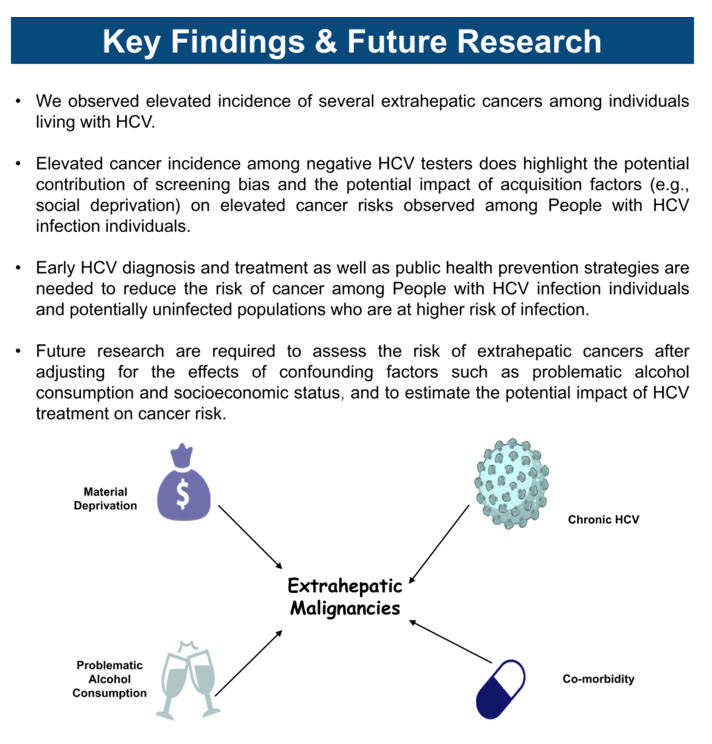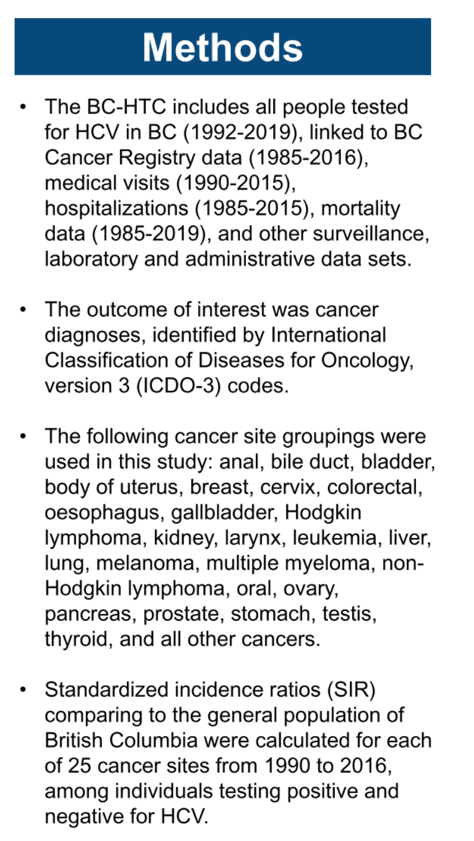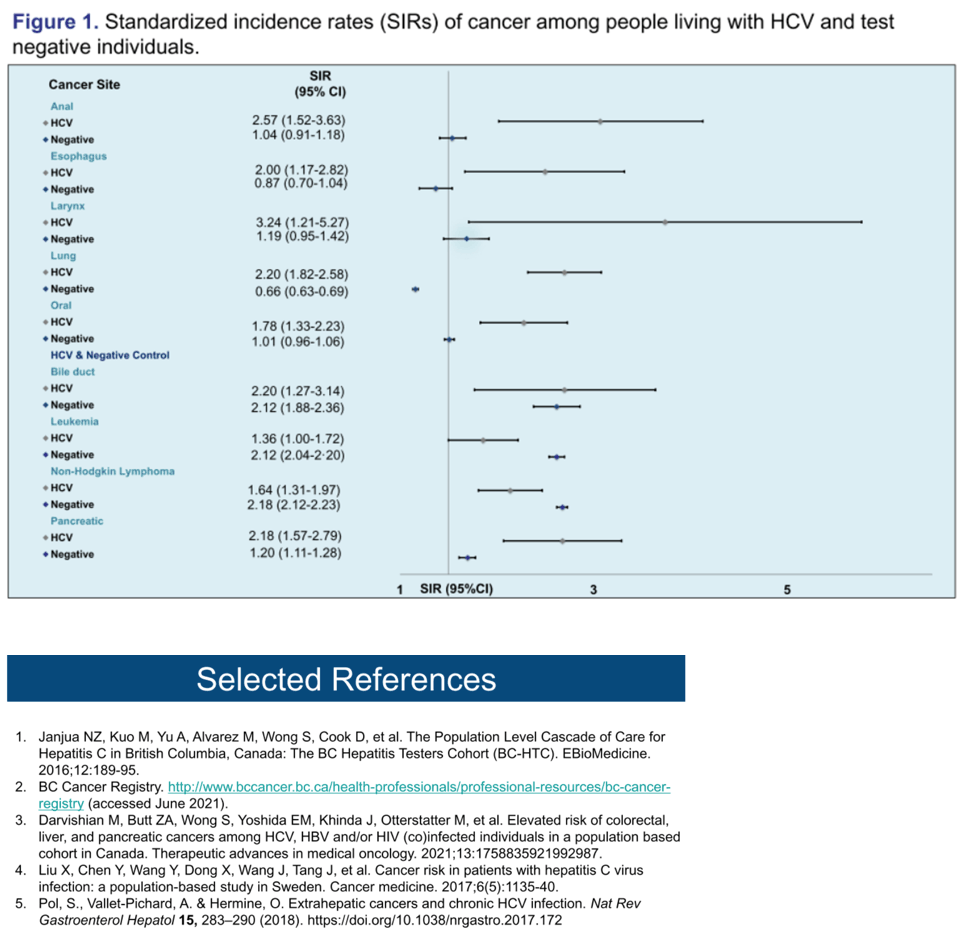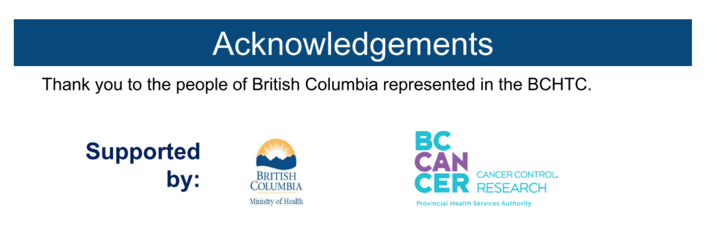 |
 |
 |
| |
CHRONIC HEPATITIS C INFECTION AND INCIDENCE OF EXTRAHEPATIC CANCERS IN A CANADIAN POPULATION-BASED COHORT
|
| |
| |

The SIR for liver, anal, oesophagus, larynx, lung, and oral cancers were significantly higher among HCV-infected individuals.
The SIRs for bile duct, leukemia, Non-Hodgkin Lymphoma, and pancreatic cancers were significantly elevated among both HCV infected and uninfected individuals (Table 1).

AASLD 2021 Nov 12-15
Maryam Darvishian1, Terry Tang1, Stanley Wong2, Mawuena Binka2, Amanda Yu2, Maria Alvarez2, Héctor Alexander Velásquez García2, Prince Asumadu Adu3, Dahn Jeong4, Sofia Bartlett5, Mohammad Karamouzian3, Jean Damascene Makuza2, Jason Wong2, Alnoor Ramji4, Ryan Woods1, Mel Krajden2, Naveed Janjua2 and Parveen Bhatti1, (1)BC Cancer, (2)British Columbia Centre for Disease Control, (3)School of Population and Public Health, University of British Columbia,(4)University of British Columbia, (5)Department of Pathology and Laboratory Medicine, University of British Columbia
Background: Chronic infection with hepatitis C virus (HCV) is associated with liver cancer. However, the HCV disease burden extends beyond the liver and has extrahepatic manifestations, such as type 2 diabetes. Although several epidemiologic studies have evaluated the risk of extrahepatic malignancies among people living with HCV, results have been heterogeneous.
Methods: We used data from the British Columbia Hepatitis Testers Cohort (BC-HTC) which includes all people tested for HCV in BC since 1990. Cancer occurrence was ascertained from the provincial BC Cancer Registry. Unlike previous studies, we calculated standardized incidence ratios (SIR) for each cancer site between 1990 and 2015 among individuals testing positive and negative for HCV. The median age at anti-HCV seroconversion (i.e., age 33 years) was used as the follow-up start date among people living with HCV. The first test date after the age of 33, was considered as the baseline date for HCV sero-negative individuals.
Results: In total, 56,823 and 1,207,357 individuals tested positive and negative for HCV, respectively. Median age at cancer diagnosis among people living with HCV and uninfected individuals was 59 (interquartile range [IQR]: 53-65) and 63 (IQR: 54-74), respectively. A greater proportion of people living with HCV were men as compared to uninfected individuals (66.7% vs. 44.7%). Comorbidities (25.0% vs. 16.3%) and social deprivation (35.9% vs. 25.0%) were more prevalent among individuals living with HCV. The SIR for liver, anal, oesophagus, larynx, lung, and oral cancers were significantly higher among HCV-infected individuals. The SIRs for bile duct, leukemia, Non-Hodgkin Lymphoma, and pancreatic cancers were significantly elevated among both HCV infected and uninfected individuals (Table 1).
Conclusion: In this study, HCV infection was associated with increased incidence of several extrahepatic cancers. While elevated cancer incidence among uninfected individuals may be related to screening bias among those being tested for HCV infection, findings highlight the potential impact of acquisition factors (e.g., social deprivation) on cancer risk among negative HCV testers. Early HCV diagnosis and treatment, as well as public health prevention strategies, such as education on increased risk of non-hepatic cancers among infected as well as uninfected individuals who might be at higher risk of infection are needed to reduce the risk of cancer.





|
| |
|
 |
 |
|
|